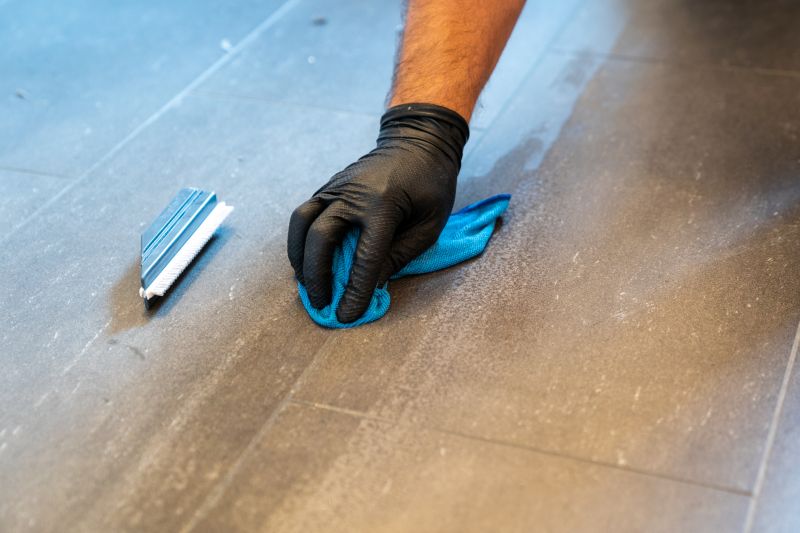Top Waterproofing Products Every Homeowner Should Know About
Explore the leading waterproofing solutions designed to protect your property from moisture and water damage effectively.
 Waterproofing products are essential solutions for protecting structures, foundations, and surfaces from water intrusion and damage. Whether for residential, commercial, or industrial applications, choosing the right waterproofing materials can help prevent issues such as leaks, mold growth, and structural deterioration. These products come in various forms, including liquid coatings, sealants, membranes, and tapes, each suited for specific needs and surfaces.
Waterproofing products are essential solutions for protecting structures, foundations, and surfaces from water intrusion and damage. Whether for residential, commercial, or industrial applications, choosing the right waterproofing materials can help prevent issues such as leaks, mold growth, and structural deterioration. These products come in various forms, including liquid coatings, sealants, membranes, and tapes, each suited for specific needs and surfaces.
Top Overall Option
All-Purpose Waterproofing Coating
An adaptable liquid coating designed for multiple surfaces including concrete, wood, and masonry. It provides a flexible, seamless barrier against water penetration and is suitable for both indoor and outdoor applications. Easy to apply with brushes, rollers, or sprayers, this coating is favored for its versatility and durable finish.
Types of Products For Waterproofings
Liquid Waterproofing Membranes
Flexible coatings that form a seamless, waterproof layer when applied to roofs, decks, or foundations. They are often sprayable or brushable for easy coverage.
Bituminous Coatings
Asphalt-based products used mainly for roof and foundation waterproofing, offering good adhesion and durability.
Rubberized Sealants
Flexible sealants suitable for sealing cracks, joints, and small gaps in various surfaces, providing waterproof protection.
Polyurethane Coatings
High-performance coatings that offer excellent elasticity and adhesion, ideal for roofing and below-grade applications.
EPDM Rubber Membranes
Durable synthetic rubber membranes used for flat roofs, pond liners, and waterproof barriers.
Cementitious Waterproofing
Waterproof coatings made from cement-based materials, often used in basements and tunnels.
Bitumen Sheets
Self-adhesive or torch-applied sheets used for roofing and underground waterproofing.
Waterproof Tapes
Self-adhesive tapes designed for quick repairs and sealing cracks or joints in various surfaces.
Spray-On Waterproof Coatings
Sprayable products that provide a seamless waterproof layer, suitable for irregular surfaces and large areas.
Flexible Sealants
Elastomeric sealants used to fill gaps and joints, maintaining waterproof integrity during surface movement.
Crack Repair Sealants
Specialized products for sealing and waterproofing cracks in concrete and masonry surfaces.
Hydrophobic Paints
Coatings that repel water while allowing surfaces to breathe, often used on walls and facades.
Waterproofing Cement Mixes
Pre-mixed or additive-enhanced cement mixes designed for waterproofing applications in construction.
Drainage Mat Systems
Protective layers that facilitate water drainage and prevent water accumulation against surfaces.
Vapor Barriers
Thin sheets used to prevent moisture vapor transmission through walls and floors.
Popular Choices
Widely used for their ease of application and seamless coverage, suitable for various surfaces.
Trusted for their durability in roofing and foundation projects, often applied in thick layers.
Commonly used for sealing cracks and joints, appreciated for flexibility and adhesion.
Known for their elasticity and strong adhesion, suitable for demanding waterproofing tasks.
Favored for flat roof applications and pond liners due to their durability and weather resistance.
Often chosen for below-grade and tunnel waterproofing for its compatibility with concrete surfaces.
Convenient for quick fixes and repairs, these tapes are popular for their ease of use.
Valued for covering large or irregular surfaces with a seamless barrier.
Widely used for sealing joints and cracks in various construction projects.
Essential for maintaining the waterproof integrity of concrete surfaces.
Increasingly popular for exterior wall protection against water penetration.
Chosen for their ease of mixing and application in new construction or repairs.
Proper application and selection of waterproofing products depend on factors such as the nature of the surface, exposure conditions, and the level of water resistance required. For example, basement walls may benefit from specialized sealants or membranes that adhere well to concrete, while roofing applications might require durable liquid coatings or sheet membranes. Understanding the different types of waterproofing materials can help users make informed decisions to ensure long-lasting protection.
In addition to traditional liquid and membrane options, there are also innovative products designed for ease of use and enhanced durability. These include spray-on coatings that provide seamless coverage, self-adhesive tapes for quick repairs, and flexible sealants that accommodate surface movement. Proper surface preparation and application techniques are critical to achieving optimal results and ensuring the longevity of waterproofing solutions.
When selecting waterproofing products, it is important to consider factors such as compatibility with existing materials, ease of application, drying or curing times, and the specific environmental conditions of the project site. Consulting with professionals or reviewing product specifications can help ensure the chosen solution meets the requirements of the project. Investing in quality waterproofing products can contribute significantly to the protection and preservation of structures over time.
Key Buying Considerations
- Identify the specific surface type and choose a compatible waterproofing product.
- Assess the level of water exposure and select a product rated for that environment.
- Consider the application method—brush, roller, spray, or tape—and choose accordingly.
- Check drying and curing times to align with project timelines.
- Evaluate the product's flexibility and adhesion properties, especially for surfaces subject to movement.
- Ensure the product provides a seamless barrier to prevent leaks and water intrusion.
- Review surface preparation requirements to maximize adhesion and effectiveness.
- Determine the longevity and maintenance needs of the waterproofing solution.
- Look for products with good coverage per application to optimize cost-efficiency.
- Consider environmental conditions such as temperature and humidity during application.
- Verify compatibility with existing materials and coatings to avoid adverse reactions.
- Check for ease of repair and reapplication if needed in the future.
- Understand the manufacturer's instructions and safety precautions.
- Assess the product's resistance to UV rays, chemicals, and other environmental factors.
- Consult with professionals or read user reviews for insights on real-world performance.
